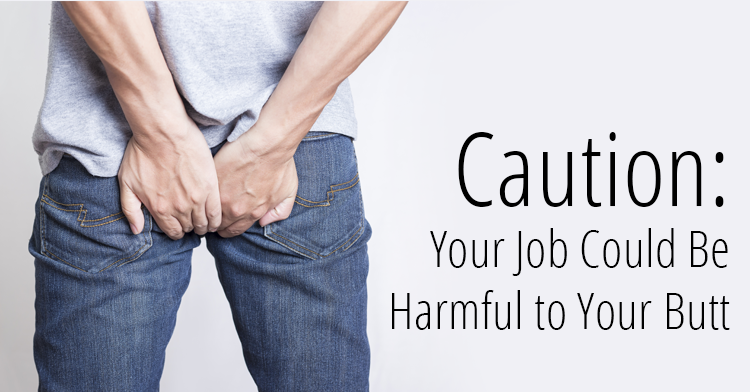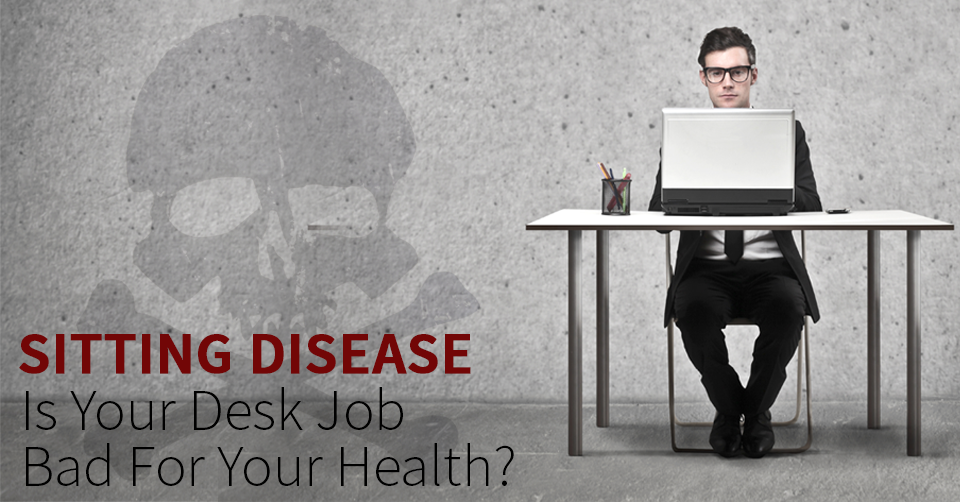By now you’ve heard of sitting disease, the ill-effects of an overly sedentary lifestyle. Now, there’s another condition affecting office workers and other sedentary people – Dormant Butt Syndrome. Yes, it is a real condition! No, we’re not making it up.
Despite the funny name, Dormant Butt Syndrome is a serious condition that could be the cause of your back pain, knee pain, or hip pain.
What is Dormant Butt Syndrome
Dormant Butt Syndrome (DBS) is a condition caused by sitting for extended periods of time. Most Americans have a job that includes sitting most of the day in an office chair. Add to that the time spent driving to and from work and even more time sitting to watch TV, play games, lounge, or read, and that’s almost a whole day of sitting on your butt. In total, the average American sits about 13 hours a day. It’s no wonder our butts now have their own condition.
Dr. Chris Kolba of Ohio State coined the phrase Dormant Butt Syndrome (also known as Dead Butt Syndrome). It’s the physical deterioration of the gluteal muscle due to sitting for prolonged periods of time. Remember the saying, “If you don’t use it, you’ll lose it?” Well, that’s what’s happening to our gluteal muscles. They’re deteriorating due to lack of use. And although that doesn’t sound like much of an issue, it can lead to some serious pain!
Fort Wayne Chiropractor, Dr. Richard Busch says, “Our clinic treats people every day who suffer from pain for one reason or another. An increasing number of our patients have sedentary lifestyles which are causing them a great amount of joint pain. Sitting for extended periods of time can cause the muscles in the butt to break down. If your gluteal muscles are weak, it can put additional strain on other joints resulting in knee pain, back pain, or hip pain.”
“In addition to joint pain, prolonged inactivity can also lead to a number of other chronic health conditions including diabetes and heart disease,” adds Dr. Davis, Chiropractor in The Villages® community.
How to Prevent Dormant Butt Syndrome
Most of us can’t just quit our jobs in lieu of a more active position. So what can you do to prevent DBS and other chronic health conditions while working? Simple, get off your butt!
- Get active. Take short breaks every hour to walk around and do a few exercises to strengthen your glutes such as lunges or squats. (You’ll not only help prevent Dormant Butt Syndrome, but your butt will look great in your favorite jeans!)
- Get up. Stand while talking on the phone or to your co-workers.
- Sit-to-Stand. Adjustable sit-to-stand desks are a great way to combat inactivity by letting you easily go from a seated position to a standing working position. There are even new seats that work great with standing-height desks to help take pressure off your joints.
- Get out. Instead of eating at your desk, go for a walk at lunch. The fresh air and exercise will do you some good too!
There you have it… 4 easy ways to help your butt, back, knees, and hips and to combat Dormant Butt Syndrome. Are you standing yet?


